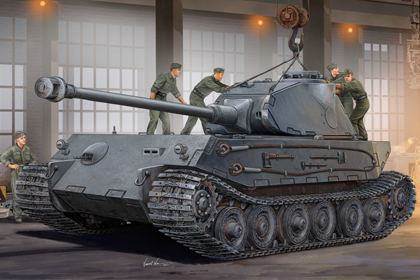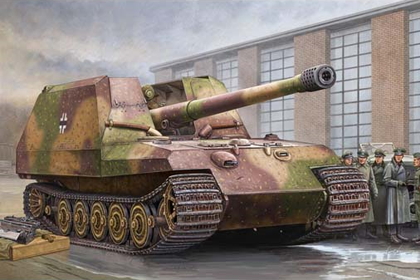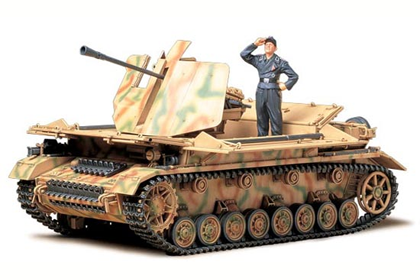This is the Takom 2023 kit in 1/35 scale, of the ‘German 12.8cm FlaK 40 Twilling’.
The 12.8 cm FlaK 40 was a German World War II anti-aircraft gun. Although it was not produced in great numbers, it was one of the most effective heavy AA guns of its era.
Development of the gun began in 1936, with the contract being awarded to Rheinmetall Borsig, the first prototype gun was delivered for testing in late 1937 and completed testing successfully. The gun weighed nearly 12 tonnes in its firing position, with the result that its barrel had to be removed for transport. Limited service testing showed this was impractical, so in 1938 other solutions were considered.
The eventual solution was to simplify the firing platform, based on the assumption it would always be securely bolted into concrete. The total weight of the system reached 26.5 tonnes, making it practically impossible to tow cross-country. In the end this mattered little, since by the time the gun entered production in 1942, it was used in primary static defensive applications. There were four twin mounts on the fortified anti-aircraft Zoo Tower, and they were also on other flak towers protecting Berlin, Hamburg, and Vienna. Approximately 200 were mounted on railcars, providing limited mobility.









